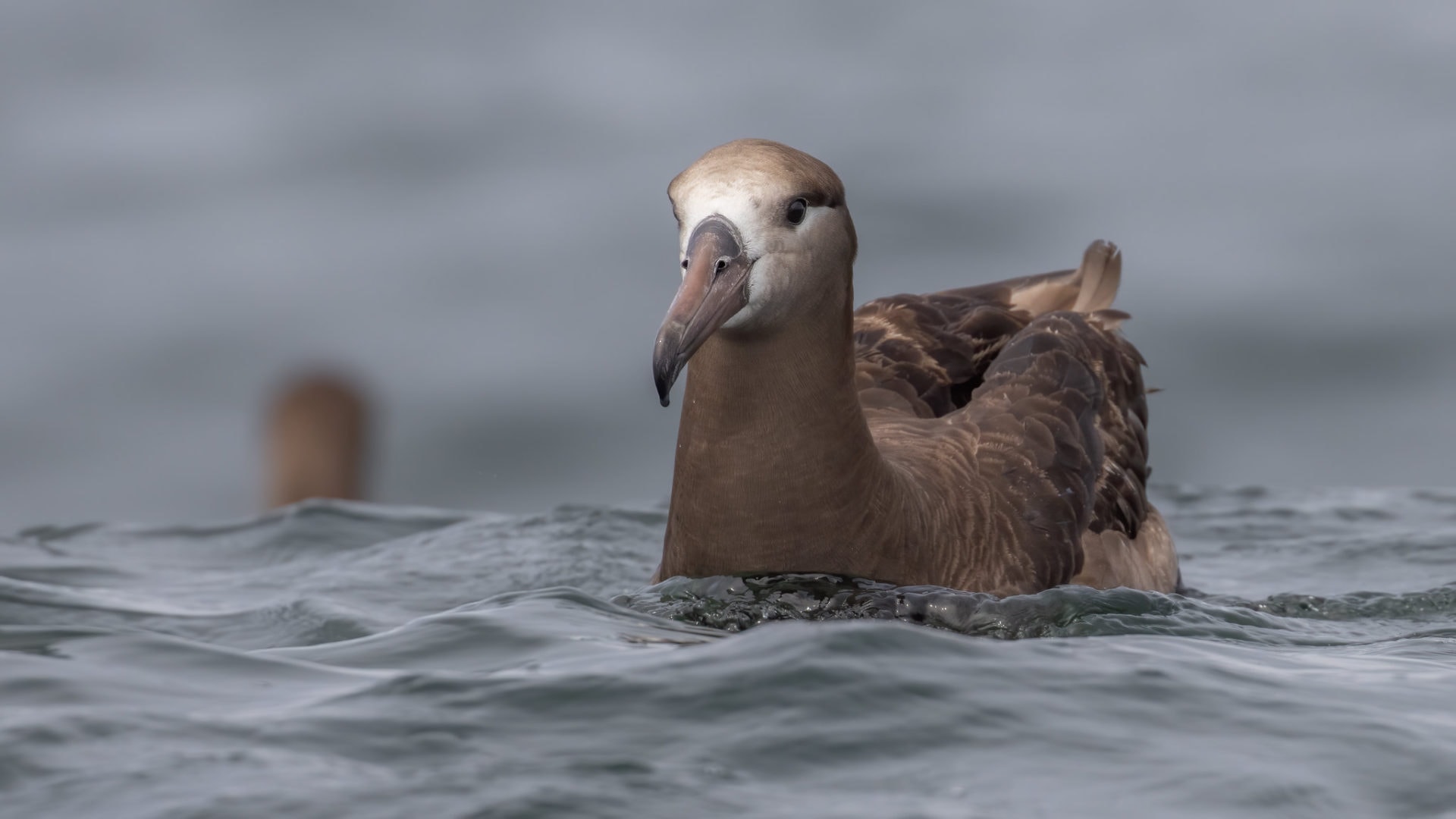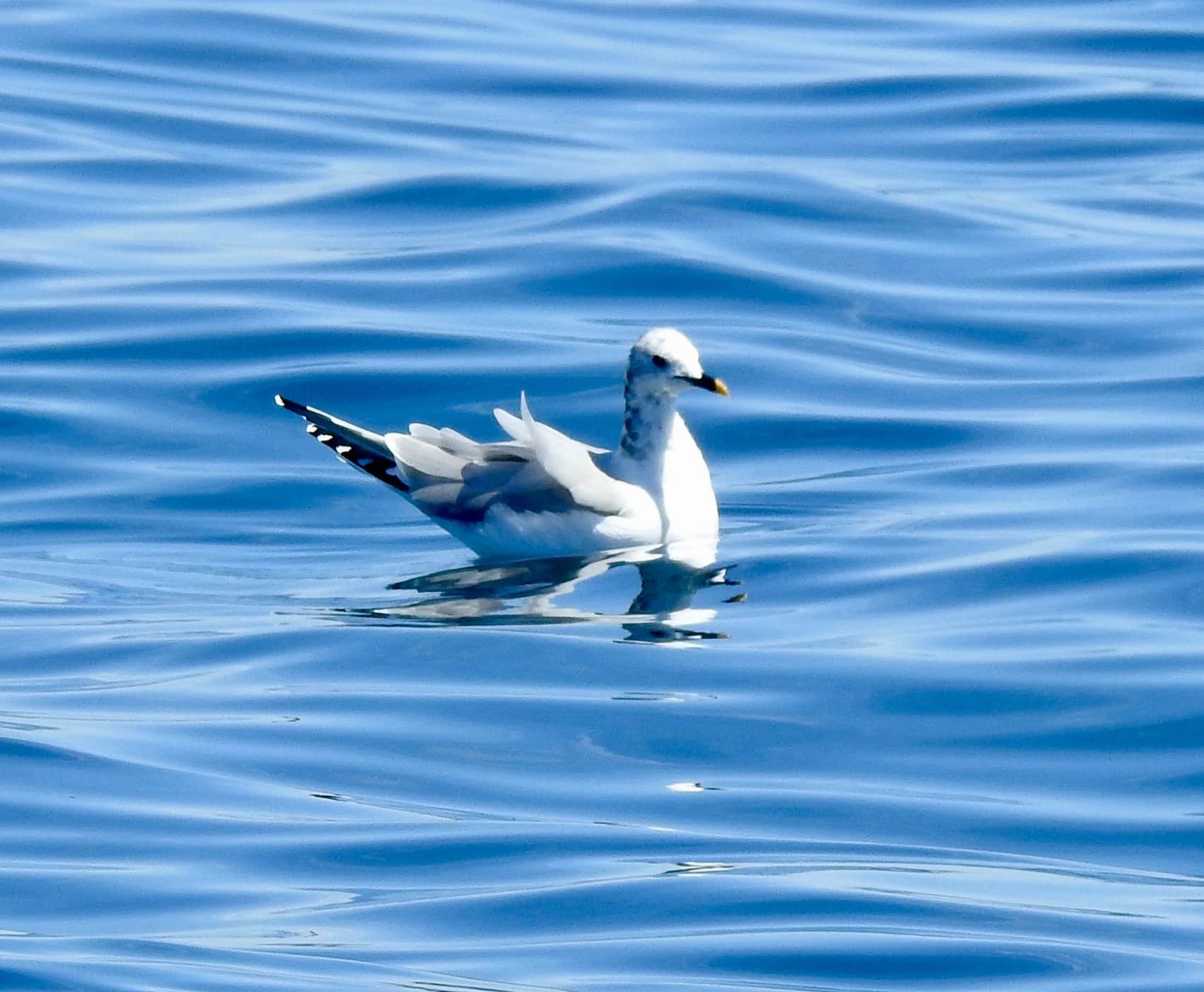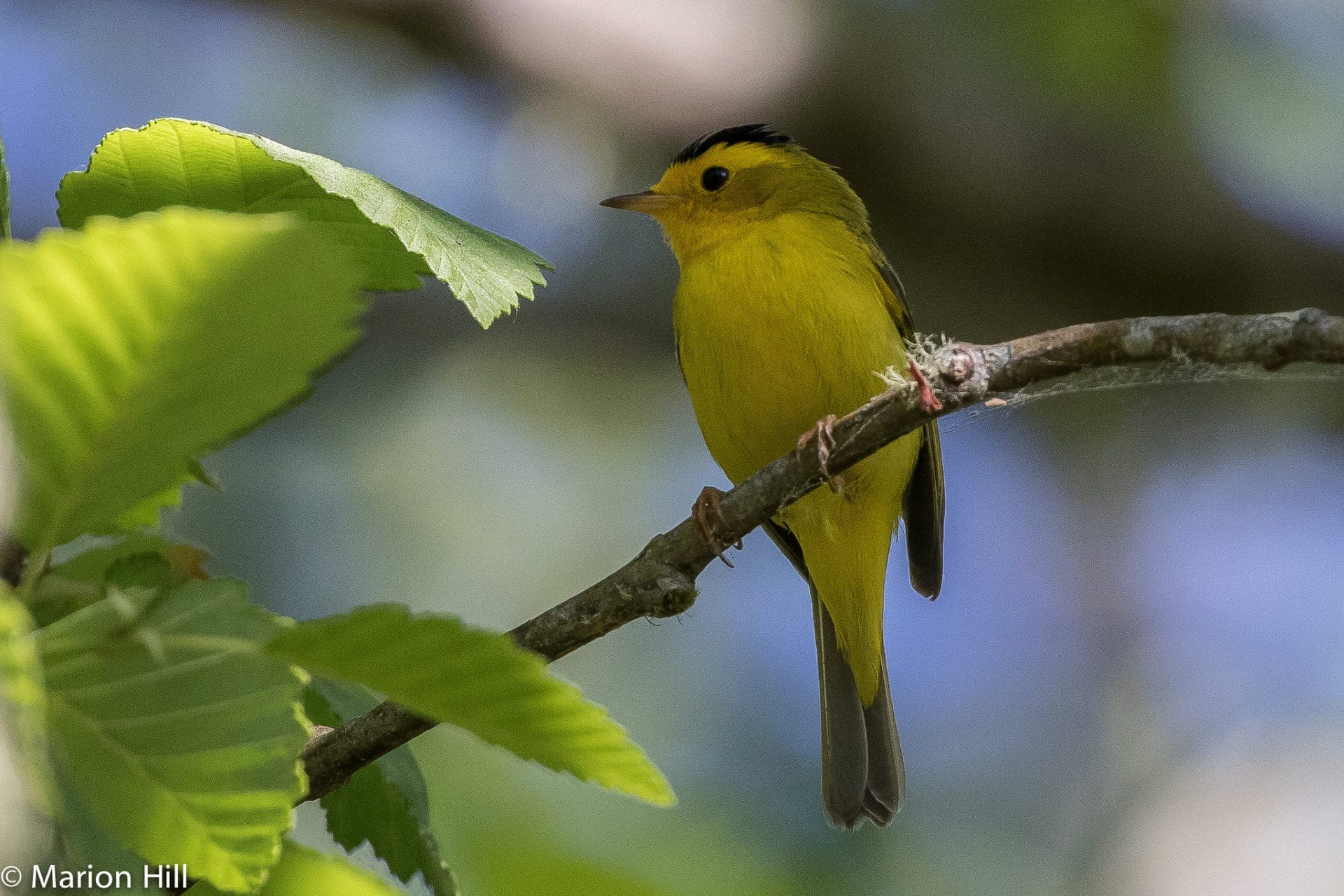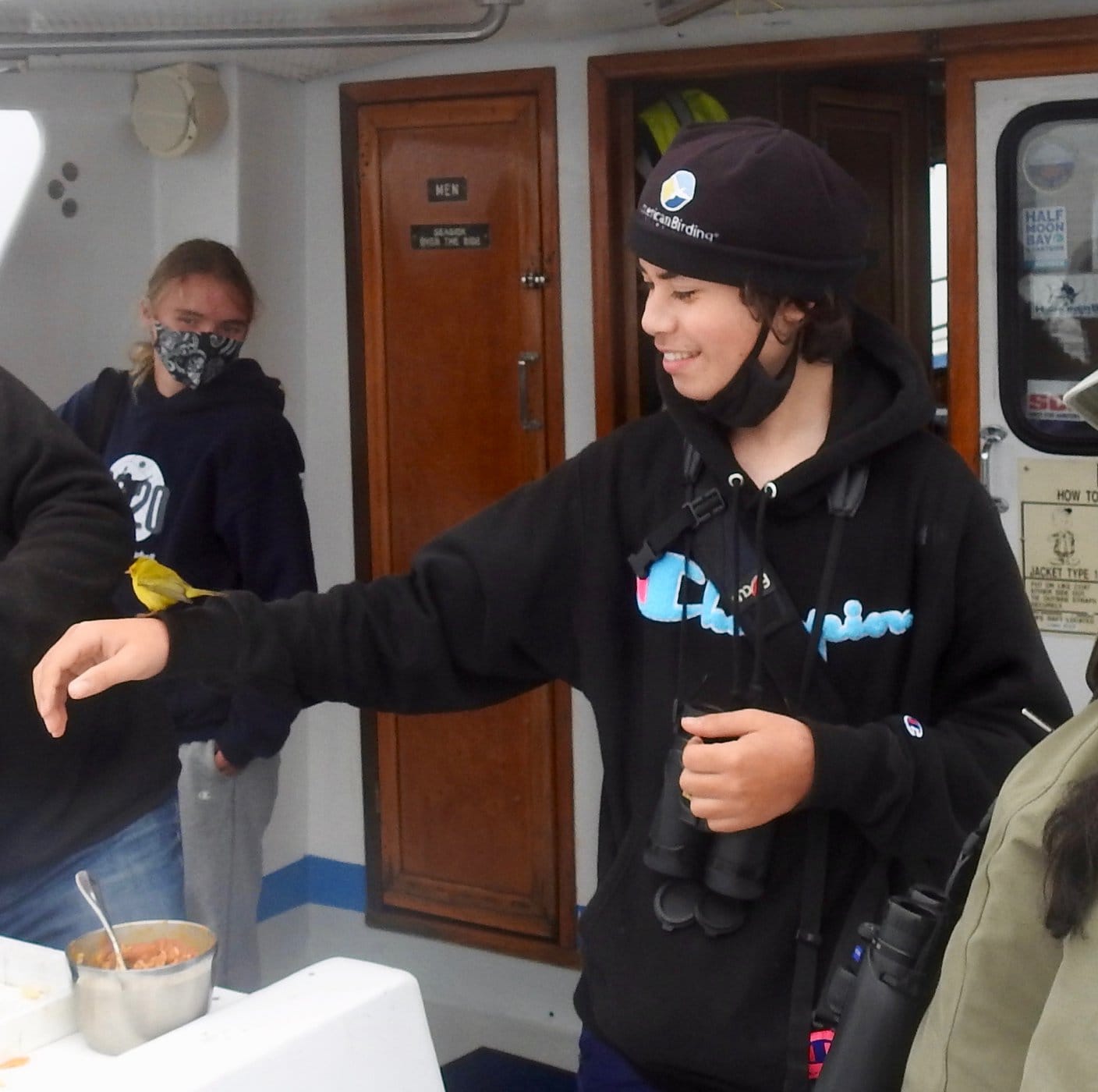Pelagic Rookie
By Michael Stevens
I have been birding fairly seriously for the last two years and found myself tempted to try a pelagic trip, an offshore boat tour meant to discover ocean-going birds. When I saw that Alvaro Jaramillo, Bay Area birder extraordinaire, was organizing a series of Covid-sensitive pelagic outings this past summer I took the plunge and signed up. Thus I found myself on the dock at Half Moon Bay one calm morning this August. The other birders were a serious lot, carrying serious-looking cameras, and decked out in serious cold-weather field gear.
I had an unserious camera, wore a hoodie over a sweatshirt, and was the only pelagic rookie in the bunch. Off we went.
We traveled slowly though the harbor, a riot of friendly species – hundreds of terns, pelicans, and cormorants plus the occasional Common Murre hinting at the exotica to come. I was concerned that the task of sorting out the birds we encountered offshore would be complicated, but it turned out to be simplicity itself: they all looked like gulls and there was no way in hell I could even begin to identify them.
It was a good day for pelagic birding with lots of gull-like birds to stare at confusedly, but gradually, I noticed one species that seemed a bit larger than the others. With my keen eye I noticed these specimens wore white on the front of the face – you know, the part that’s right where that big hooked bill connects. And voilà – I could recognize a pelagic species, Black-footed Albatross. With that building block, the rest of the pelagic taxonomy quickly fell into… well, no; it didn’t help at all, but hey! I saw an Albatross!

And then there’s the photography thing.
My keys to a good bird photo are to be very close to a subject that’s standing still. When you’re bouncing around on the ocean, this turns out to be difficult. My picture roll ended up with a lot of views of empty ocean and a lot of views of small black dots on otherwise empty ocean. And one good picture of – what else? – a gull. But Sabine’s Gull, a pelagic species with a very distinctive wing pattern. So, that’s 2!

When things settled down in the afternoon, one of the spotters who accompany Alvaro on these trips, the superb birder Malia DeFelice, took things in hand and made sure I had seen a Pink-footed Shearwater and knew that the little ones were Storm-Petrels. It was encouraging enough that I thought if I went out one more time I might actually figure something out.
That led to my second pelagic trip in mid-September.
Randomly, this was a trip meant to travel north to San Francisco waters. So the passengers were birders with awesome San Francisco county lists, all of whom knew each other well, plus one Alameda not-quite-rookie… me! I did find that I had actually progressed up the learning curve, and while I was not calling out exciting finds, I could follow the conversation. My progress was complicated by the frightening atmospheric conditions we have all been living with: thick smoky fog. Visibility was terrible from beginning to end of this trip, and one result was that we encountered several small flocks of passerines, presumably wandering around lost. I wasn’t sure it was kosher to pay attention to wandering warblers (and a Merlin that made several passes around the boat) but it turns out random land birds are an expected and appreciated lagniappe of pelagic birding, and we got an interesting warbler list.
The birding and a few whale and sea lion sightings kept us busy but the passerine situation got way more vivid around midday when a juvenile Brown-headed Cowbird landed on the boat.

It was tentative and skittish at first, but a place to perch must have looked pretty good to a bird that had been flying blind for a long time. The cowbird was quickly comfortable enough to start fooling around, taking off, dropping back a hundred yards then racing back for an elegant landing. After pulling this maneuver a few times the cowbird came racing up with a friend, a Wilson’s Warbler, who also quickly made itself at home. The Wilson’s made itself useful. You know how you can be in the middle of the ocean moving at a decent rate of speed and still have a bunch of super-annoying flies buzzing around? A hungry Wilson’s Warbler will solve this problem. Our stowaway put on an astounding demonstration of efficient predation, cleaning out the insect population in about 90 seconds. The cowbird was also foraging actively, working on cracker crumbs dropped by the passengers.

And let’s face it – there were some comments about the relative merits of our two guests. Cowbird hate is a thing, and the utility of the warbler in doing away with our insect problem seemed to confirm some opinions. Also: how did these two get to be friends? Did the warbler maybe raise the cowbird? Ultimately we adopted both of them, and they adopted us, perching charmingly on heads and hands of most of the passengers.

Among our passengers was a San Francisco family of 4, Mom and Dad T. and their two daughters, all serious birders. Appropriately, the T. daughters became the chief bird wranglers and the youngest daughter astounded everyone by putting the Wilson’s to sleep by gently patting its back.
As the afternoon wore on, many passengers turned their attention back to the pelagic wonders around us, but many did not – it was hard to take your eyes off two tame songbirds! And gradually the wind and hours began to take their toll. The birds stopped their frolicking off the stern and seemed heading toward torpor or perhaps worse, especially the warbler. Dad T. finally fixed up a cozy box for the warbler and took it inside out of the breeze. We were all anxious – would he have to discretely smuggle it off the boat and tell the girls it had gone to a farm upstate to fly free with its friends?
As we approached the harbor the fog was still so heavy we couldn’t see shore til we were within a few hundred yards. The cowbird perked up, took one look around, and headed for dry land. Dad T. waited until we docked to check our other guest, but as soon as he opened the box the Wilson’s too took off, landing on a boat a few slips down where there were surely plenty of flies. We don’t know what happened after that but let’s imagine the best, and hope this heroic warbler goes on to raise many more generations of cowbirds.
About Michael: Michael Stevens is a GGBA member and recently retired from the California College of the Arts. He is currently birding full time but anticipates tending to his other responsibilities at some future point.
